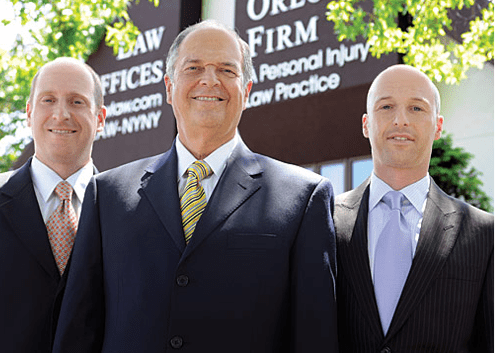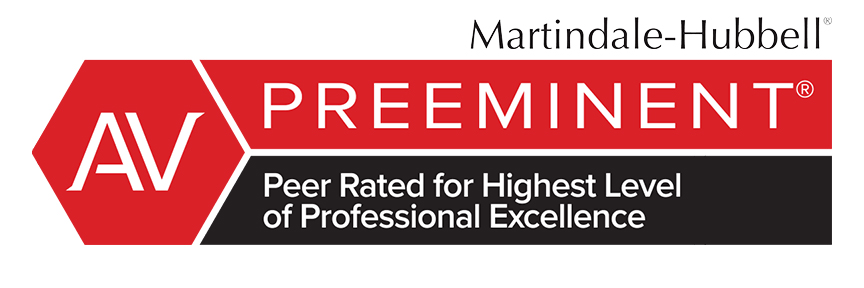Why Taking Photos After an Accident Matters:
Quick Answer: Taking photos and notes after an accident helps preserve important details like damage, injuries, and the scene. This information can support your claim and protect your rights in New York City. It’s important to act quickly before evidence changes or disappears.
What Types of Photos Should You Take at an Accident Scene
After an accident, taking clear photos is one of the most important steps you can take. Photos provide visual proof of what happened and can be very helpful for insurance claims or legal cases. Here are the key types of photos you should take at the accident scene:
- Overall Scene Photos: Capture wide-angle shots of the entire accident scene. This includes the position of all vehicles involved, nearby traffic signs, traffic lights, road conditions, and any skid marks or debris. These photos help show how the accident happened and the environment around it.
- Vehicle Damage: Take close-up photos of all damage to your vehicle and the other vehicles involved. Photograph different angles—front, back, sides, and underneath if visible. Be sure to capture any broken glass, dents, scratches, or parts that fell off.
- License Plates and Vehicle Details: Photograph the license plates of all vehicles involved. Also, take pictures of the make, model, and color of the cars. This information is important for identifying the vehicles later.
- Injuries: If you or others have visible injuries, take photos of those as well. This can help document the extent of harm caused by the accident. However, only take these photos if it is safe and appropriate to do so.
- Surrounding Area: Photograph nearby landmarks, street signs, traffic signals, and road conditions. For example, if a stop sign was missing or a traffic light was not working, these photos can support your case.
- Weather and Lighting Conditions: Take pictures that show the weather at the time of the accident, such as rain, fog, or snow. Also, capture the lighting conditions, like whether it was daylight, dusk, or dark. These details can affect how the accident occurred.
- Other Relevant Evidence: If there are any witnesses, try to photograph their contact information if possible. Also, pictures of any nearby security cameras or surveillance signs can be useful.
Remember to take multiple photos from different angles to provide a full picture of the accident. If you can, use your phone’s video camera to record the scene as well. This can capture more detail than still photos alone.
Having a comprehensive set of photos helps create a strong record. This can be vital when dealing with insurance companies or if you need to take legal action. If you have questions about what evidence to collect after an accident, The Orlow Firm is available to help. You can reach us at (646) 647-3398 for guidance.
The Role of Detailed Notes in Supporting Your Accident Claim
Detailed notes play an important role in supporting your accident claim. They help create a clear record of what happened and can provide information that photos alone may not capture. When you write down facts soon after the accident, your memory is fresh, making your notes more accurate and useful.
Here are some ways detailed notes can support your accident claim:
- Record of Events: Notes allow you to describe the accident in your own words. This includes the time, date, location, weather, and how the accident occurred. Writing down these details helps build a timeline that can clarify what happened.
- Descriptions of People Involved: You can note the names, contact information, and descriptions of other drivers, passengers, and witnesses. This information is vital for follow-up and verifying statements.
- Details About Injuries: Writing about any pain, discomfort, or visible injuries you experience right after the accident helps document your condition early. This can support medical records and show the impact of the accident.
- Descriptions of Damage: Besides photos, notes can describe damage to vehicles or property that may not be obvious in pictures. For example, a note about unusual car noises or changes in vehicle performance can be important.
- Actions Taken: You can list steps you took after the accident, such as calling the police, seeking medical care, or notifying your insurance company. This shows you acted responsibly and promptly.
Detailed notes also help when you speak with insurance companies or lawyers. They provide a reliable account that can reduce misunderstandings or disputes about what happened. For example, if an insurance adjuster questions your version of events, your notes can support your story.
To make your notes most effective, be sure to:
- Write clearly and use simple language.
- Include as many details as you can remember.
- Keep your notes factual—avoid guessing or assuming what others were thinking or doing.
- Update your notes if you remember more information later.
- Keep your notes in a safe place, separate from your phone or photos.
In short, detailed notes serve as a written record that complements photos and other evidence. They help tell the full story of the accident, supporting your claim and protecting your rights. If you have questions about how to document your accident or need help with your claim, consider contacting The Orlow Firm at (646) 647-3398 for guidance tailored to your situation.
How Photos and Notes Help Prove Fault in an Accident
Photos and notes taken right after an accident can play a key role in proving fault. Fault means who was responsible for causing the accident. Insurance companies, and sometimes courts, rely on clear evidence to decide who caused the crash and who should pay for damages. Your photos and notes can provide this important proof.
Photos show the accident scene as it really was. They capture details that people might forget or see differently later. For example, photos can show:
- Damage to vehicles – The location and severity of dents, scratches, or broken parts can suggest how the crash happened.
- Position of vehicles – Where cars ended up after the accident helps show who may have failed to stop or yield.
- Road conditions – Wet pavement, potholes, or unclear signs might have contributed to the accident.
- Traffic signals and signs – Photos can prove whether traffic lights were red or green, or if stop signs were visible.
- Skid marks or debris – These can indicate sudden braking or impact points.
Detailed notes add context to your photos and help explain what happened. Write down things like:
- Time and date of the accident
- Weather and lighting conditions
- Descriptions of how the accident occurred from your point of view
- Statements from other drivers or witnesses who may have admitted fault or described the crash
- Names and contact info of everyone involved and any witnesses
- Any injuries you or others suffered and when you sought medical help
Together, photos and notes can help reconstruct the accident scene accurately. This evidence supports your version of events and can challenge false claims from others. For example, if another driver says they stopped at a red light but your photos show they ran it, this can prove their fault.
Insurance adjusters often decide fault based on the evidence you provide. Clear photos and thorough notes make it easier for them to see the facts. Without such documentation, fault may be harder to establish, which can delay or reduce your compensation.
In legal cases, your photos and notes serve as valuable proof to back up your claim. They can be used by your attorney to argue your case or by a judge or jury if the matter goes to court.
In short, taking photos and notes after an accident helps protect your rights. It creates a record that shows what really happened and who was responsible. This evidence can make a difference in insurance claims and legal actions related to your accident.
Common Mistakes to Avoid When Documenting an Accident
When documenting an accident, it’s easy to make mistakes that can hurt your claim later. Avoiding common errors can help protect your rights and make your case stronger. Here are some frequent mistakes people make when taking photos and notes after an accident:
- Not Taking Enough Photos: Some people take only a few pictures or focus on just one vehicle. It’s important to capture multiple angles of all vehicles involved, the surrounding area, traffic signs, skid marks, and any visible injuries.
- Blurry or Poor-Quality Images: Photos that are unclear or poorly lit may not be useful as evidence. Take your time to ensure pictures are sharp and well-lit, even if it means using your phone’s flashlight or moving to a better spot.
- Failing to Include Important Details: Overlooking key elements like license plates, street names, traffic signals, or weather conditions can weaken your documentation. Make sure your photos and notes include these important facts.
- Waiting Too Long to Document: Delaying photos or notes can lead to lost evidence. Conditions at the scene may change quickly, and memories fade. Try to document the accident as soon as it is safe to do so.
- Writing Vague or Incomplete Notes: Notes that say only “accident happened” or “car hit me” won’t be very helpful. Include detailed descriptions like time, location, weather, how the accident happened, and what each driver was doing.
- Ignoring Witness Information: Not collecting names and contact information from witnesses can be a missed opportunity. Witnesses can provide valuable testimony to support your claim.
- Admitting Fault or Apologizing: Writing or saying anything that admits fault can be harmful to your case. Stick to the facts and avoid assigning blame in your notes or conversations.
- Sharing Photos Publicly: Posting accident photos on social media can be risky. Insurance companies or opposing parties may use your posts against you. Keep your documentation private until advised otherwise by a lawyer.
- Using Your Phone Unsafely: Trying to take photos while driving or in unsafe conditions can cause further accidents. Always ensure your safety first and pull over or wait for help before documenting.
By avoiding these mistakes, you help preserve clear and reliable evidence. This documentation can be crucial in proving fault and supporting your insurance claim or legal case. If you have questions about how to document your accident properly, consider contacting The Orlow Firm at (646) 647-3398 for guidance.
Using Your Phone Safely to Capture Accident Evidence
Using your phone to capture evidence after an accident can be very helpful. However, it is important to do so safely to protect yourself and others. Here are some key tips to keep in mind when using your phone at the accident scene:
- Stay aware of your surroundings. Before taking photos or notes, make sure you are in a safe spot away from moving traffic or other hazards.
- Do not use your phone while driving. If you are still in your vehicle, do not try to take pictures or write notes until you have parked safely.
- Keep your phone secure. Hold your phone firmly to avoid dropping it, especially if you need to move around the accident scene.
- Focus on important details. Use your phone camera to capture clear images of vehicle damage, license plates, street signs, traffic signals, skid marks, and any visible injuries.
- Record videos if possible. A short video can show the overall accident scene better than photos alone. Walk around carefully and capture the whole area.
- Use the notes or voice memo app. If writing notes is difficult, consider using voice recordings to capture your observations. This can be faster and helps ensure you don’t forget details.
- Keep your phone charged. Make sure your phone has enough battery to capture all necessary evidence. If possible, bring a portable charger or car charger with you.
- Respect privacy. Avoid taking photos of people without their permission unless it is necessary for documenting the accident. Be mindful of privacy laws and sensitive situations.
By using your phone safely, you can collect valuable evidence that supports your accident claim without putting yourself or others at risk. If you have questions about how to document your accident or need help after an accident in NYC, contact The Orlow Firm at (646) 647-3398 for assistance.
How Timely Documentation Can Affect Insurance Claims
Filing an insurance claim after an accident can be a complex and time-sensitive process. One of the most important steps you can take is to document the accident as soon as possible. Timely documentation—such as photos and detailed notes—can have a significant impact on how smoothly your insurance claim proceeds and how much compensation you may receive.
Why timing matters: Insurance companies often investigate claims closely. The sooner you provide clear evidence, the easier it is to prove what happened. Memories fade, and physical evidence can change or disappear over time. For example, weather conditions might alter skid marks, or damage might be repaired or worsened. Immediate photos and notes capture the scene accurately before these changes occur.
Benefits of quick documentation include:
- Stronger evidence: Clear photos of vehicle damage, road conditions, and injuries taken right after the accident can help support your version of events.
- Faster claims processing: Insurance adjusters often rely on early evidence to evaluate claims. Having documentation ready can prevent delays.
- Reduced disputes: Detailed notes about the accident—such as time, location, weather, and what you observed—can help resolve disagreements about fault or damages.
- Support for medical claims: Timely photos of injuries and medical records can help confirm the extent of your injuries, which is important for insurance benefits.
Examples of timely documentation helping claims:
- If you take photos of the accident scene, showing clear damage and road signs, it can prove where and how the accident happened.
- Notes written soon after the accident can include details you might forget later, like the other driver’s behavior or statements they made.
- Documenting visible injuries promptly can support your medical claims and show the connection between the accident and your treatment.
Delays in documenting an accident can cause problems. Insurance companies may question the accuracy of late evidence or suspect that details have been altered. This can lead to denied or reduced claims, leaving you responsible for costs.
In New York City, where accidents happen frequently, acting quickly to document the scene and your injuries is especially important. It helps protect your rights under New York’s no-fault insurance system and any additional claims you may pursue.
If you have questions about how to document your accident properly or need help with your insurance claim, consider contacting The Orlow Firm at (646) 647-3398. We can provide guidance to help you protect your interests during this critical time.
What to Include in Your Accident Notes for Legal Use
When you take notes after an accident, it is important to include clear and detailed information. These notes can be valuable if you need to file an insurance claim or pursue a legal case. Here are key things you should include in your accident notes for legal use:
- Date and Time: Write down the exact date and time the accident happened. This helps create an official timeline.
- Location: Note the exact place where the accident occurred, including street names, nearby landmarks, or intersections.
- Weather and Road Conditions: Describe the weather (rainy, sunny, foggy) and road conditions (wet, icy, under construction) at the time of the accident.
- Parties Involved: Record the names, contact information, and insurance details of everyone involved, including drivers, passengers, and witnesses.
- Vehicle Information: Note the make, model, color, and license plate numbers of all vehicles involved in the accident.
- Description of the Accident: Write a clear, step-by-step account of how the accident happened. Include details like the direction each vehicle was traveling, traffic signals, and any actions taken by the drivers.
- Damage to Vehicles and Property: Describe visible damages to all vehicles and any nearby property, such as guardrails, signs, or fences.
- Injuries: Document any injuries you or others sustained, even if they seem minor at first. Note where on the body the injury occurred and any immediate symptoms.
- Statements from Others: If possible, write down what witnesses or other drivers said about the accident. Try to capture their exact words.
- Police Report Details: If police came to the scene, note the officers’ names, badge numbers, and the police report number if available.
- Medical Treatment: Record any medical attention you received right after the accident, including ambulance or hospital visits.
- Feelings and Observations: Include your personal feelings or observations, such as whether you felt dizzy, confused, or noticed anything unusual about the other driver’s behavior.
Keeping these notes organized and factual can make a big difference when dealing with insurance companies or lawyers. Write down the information as soon as possible after the accident, while your memory is fresh. Avoid guessing or making assumptions — stick to what you observed and experienced.
If you have questions about your accident notes or how to use them in your case, you can contact The Orlow Firm at (646) 647-3398. We can help you understand how proper documentation supports your claim and protects your rights.
When and How to Share Photos and Notes with Your Lawyer
It is important to share your photos and notes with your lawyer as soon as possible after an accident. Early sharing helps your attorney understand the full details of your case and provide better advice. Usually, you should bring all your documentation to your first meeting or send it promptly if you have already contacted a lawyer.
When sharing photos and notes, consider the following steps:
- Organize your materials: Group your photos by topic, such as vehicle damage, injuries, or the accident scene. Arrange your notes in chronological order to clearly show the sequence of events.
- Use digital formats: If possible, send photos and notes by email or through a secure client portal. Digital files are easier for lawyers to review and store.
- Provide context: Explain each photo or note briefly. For example, note the date, time, and what the image shows or what you were thinking when you wrote your notes.
- Keep originals safe: Always keep the original photos on your phone or camera and the original written notes. Your lawyer may want to see these if needed later.
- Be honest and thorough: Share all relevant information, even if some details seem minor. Full disclosure helps your lawyer build a stronger case.
Remember, your photos and notes are evidence that can support your claim. Sharing them quickly allows your lawyer to act promptly, especially when gathering additional evidence or negotiating with insurance companies.
If you are unsure about how to share your documentation or what to include, don’t hesitate to ask your lawyer. Clear communication ensures that your case is handled with care and attention.
To discuss your accident and the documentation you have collected, you can contact The Orlow Firm directly at (646) 647-3398. We are ready to help you understand how your photos and notes fit into your case and what to do next.
Understanding Privacy and Legal Issues When Taking Photos After an Accident
Taking photos after an accident can be very helpful, but it’s important to understand the privacy and legal rules that apply. In New York City, you generally have the right to take photos of the accident scene, damaged vehicles, and public areas. However, there are limits to protect people’s privacy and avoid legal problems.
Here are key privacy and legal points to keep in mind when taking photos after an accident:
- Respect personal privacy: Avoid taking close-up photos of people’s faces or injuries without their permission. Some individuals may feel uncomfortable or have privacy concerns about photos showing them in distress or pain.
- Do not photograph inside private property: Taking pictures inside someone’s home or business without consent may violate privacy laws. Stick to public areas like streets, sidewalks, and the accident scene itself.
- Do not interfere with emergency responders: Avoid taking photos that block or distract police officers, paramedics, or firefighters working at the scene. Their safety and ability to do their job come first.
- Be cautious with photos of minors: If children are involved or nearby, take extra care to avoid sharing images that could violate their privacy rights.
- Avoid posting photos on social media immediately: Sharing accident photos online can sometimes hurt your legal case, especially if they show sensitive details or imply fault. It’s best to wait and consult with a lawyer before posting anything publicly.
From a legal standpoint, photos taken at the accident scene can be strong evidence to support your claim. But improper use or sharing of these photos could create problems. For example, publishing photos that invade someone’s privacy or are misleading may lead to legal claims against you.
In New York, there is no law that bans taking photos of car accidents in public places. Still, taking photos respectfully and responsibly is important. If you are unsure about what you can photograph or how to use those photos, it is wise to ask a personal injury attorney for advice. They can guide you on how to collect evidence without crossing legal or privacy boundaries.
Remember: The goal of taking photos after an accident is to protect your rights and support your case. Being mindful of privacy and legal issues helps ensure that your documentation is useful and does not create new problems.
If you have questions about accident documentation or need help with your case, contact The Orlow Firm at (646) 647-3398. We can provide information about your rights and the best way to handle accident evidence in New York City.
How Documentation Supports Your Medical and Repair Records
After an accident in New York City, keeping detailed photos and notes can strongly support your medical and repair records. This documentation helps create a clear picture of the injuries you suffered and the damage to your vehicle. It can be important for insurance claims and any potential legal case.
Supporting Medical Records: Photos of visible injuries, such as cuts, bruises, or swelling, can show the extent of your harm right after the accident. Detailed notes about your pain, symptoms, and medical visits provide a timeline of your recovery. This information can help doctors, insurance adjusters, and lawyers understand how the accident affected your health.
Supporting Vehicle Repair Records: Photos of your vehicle’s damage from different angles give a clear record of the condition right after the accident. Notes describing the damage and any repairs needed can help explain the severity of the crash. This evidence can be useful when dealing with insurance companies or repair shops, ensuring you receive fair compensation for the damage.
How This Documentation Works Together:
- Proof of Injury and Damage: Photographs and notes provide proof that the injuries and vehicle damage were caused by the accident.
- Tracking Treatment and Repairs: Keeping records helps track medical treatments and vehicle repairs over time, showing ongoing needs and expenses.
- Supporting Insurance Claims: Clear documentation strengthens your claim by providing facts rather than relying on memory alone.
- Helping Legal Cases: If your case goes beyond insurance, your photos and notes can serve as important evidence in court or settlement negotiations.
For example, if you have a neck injury that worsens days after the accident, your notes about increasing pain and photos of any visible symptoms can support your medical records. Similarly, photos showing dents and broken parts on your car help repair shops and insurers understand the full scope of damage.
In short, taking photos and writing notes right after an accident is a practical step to back up your medical and repair records. This careful documentation can protect your rights and improve your chances of fair treatment by insurance companies. If you need help understanding how to organize or use this information after an accident, you can contact The Orlow Firm at (646) 647-3398 for guidance.
Next Steps: Protecting Your Rights After an Accident Through Documentation

After an accident, taking photos and notes is just the beginning of protecting your rights. The next steps involve carefully preserving and using this documentation to support your claim and ensure you receive fair treatment from insurance companies or other parties involved.
1. Organize Your Evidence
Keep all your photos, notes, and related documents in one place. Use a folder—physical or digital—to store:
- Photos of the accident scene, vehicles, and injuries
- Your detailed notes about what happened and when
- Medical records and bills
- Repair estimates and receipts
- Correspondence with insurance companies or other parties
Having everything organized makes it easier to track your claim and provide proof when needed.
2. Report the Accident Promptly
Notify your insurance company as soon as possible after the accident. Provide them with your photos and notes to support your claim. Timely reporting can prevent delays or denials of benefits under New York’s no-fault insurance system.
3. Seek Medical Attention and Keep Records
Even if injuries seem minor, get checked by a healthcare professional. Some injuries appear later and can affect your claim. Keep detailed medical records and share relevant information with your doctor about how the accident happened.
4. Avoid Sharing Too Much on Social Media
Be careful about what you post online after an accident. Insurance companies and other parties may use your posts to challenge your claim. Stick to sharing facts only with your lawyer or trusted advisors.
5. Consult with a Personal Injury Lawyer
If your injuries are serious or your claim is complicated, consider talking to a personal injury attorney. They can help you understand how your photos and notes fit into your case and guide you through the legal process. Sharing your documentation with a lawyer early on helps build a stronger case.
6. Keep Updating Your Notes and Photos
If new details emerge—like additional medical treatments or changes to your vehicle—add these to your records. Ongoing documentation can show the full impact of the accident over time.
7. Use Documentation to Negotiate or Litigate
Photos and notes are key tools when negotiating with insurance companies or presenting your case in court. They help prove what happened, the extent of damages, and who was at fault. Well-kept documentation can influence the outcome of your claim.
Remember: Protecting your rights after an accident means being thorough and timely with your documentation. Taking these next steps can make a significant difference in obtaining fair compensation and resolving your claim efficiently. If you have questions or need help reviewing your accident evidence, contact The Orlow Firm at (646) 647-3398 for guidance.









